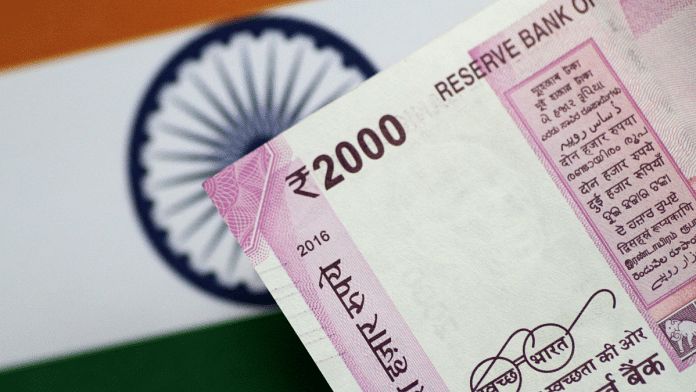New Delhi: With the wealth of the crony-capitalist sector going up from 5 per cent to almost 8 per cent of its Gross Domestic Product (GDP) in the past decade, India ranks at 10th position in the British magazine The Economist’s 2023 ‘Crony-Capitalism Index’.
Released on 2 May, the Crony-Capitalism Index — first devised in 2014 — indicates the concentration of wealth among a few big business tycoons, mainly owing to their closeness to the state. This year, the index was calculated for 43 countries whose GDP is above $250 billion. Currently, India’s GDP is around $3.3 trillion, according to the International Monetary Fund (IMF).
In 2014, India had ranked ninth among 22 countries.
According to The Economist’s calculations, in the past 25 years, the wealth of crony capitalists has increased from $315 billion (1 per cent of global GDP) to $3 trillion in 2023 — which is about 3 per cent of the global GDP. And more than 60 per cent of the increase in crony capitalist’s wealth has come from four countries — the US, China, Russia and India.
According to the 2023 index, Russia is placed at 1st position followed by the Czech Republic, Malaysia, Singapore and Mexico.
Despite having one of the highest number of billionaires and industrial output, China stood at number 21 on The Economist‘s index. In fact, at 26, the US is relatively less a crony-capitalist country than China.
Japan stood at number 36 while Germany was found to be one of the least crony-capitalist countries at rank 37.
Also Read: What degree of dominance do India’s biggest businesses enjoy? Decoding the Billionaire Raj
Index calculation
The Economist pegs its measure of crony capitalism to the amount of money a country’s billionaires earn from sectors the magazine considers to be typically ‘rent-seeking’. In economics, rent is the surplus a business gets after paying for inputs, mainly labour and capital. The tendency to earn beyond the value of investment using tactics that distort competition is rent seeking behaviour.
According to The Economist, rent-seeking behaviour usually exists strongly where the state is involved. For its Crony Capitalism Index, the magazine has considered the following sectors: Casinos, coal, palm oil and timber, defence, deposit-taking banking and investment banking, infrastructure and pipelines, oil, gas, chemicals, and other energy, ports, airports, real estate and construction, steel, other metals, mining and construction, and utilities and telecom services.
Getting land and resources for cheap, selling the output at inflated prices and formation of cartels, monopolies and bending rules that favour them are some of the salient features of rent seeking behaviour.
The analysis used the list of billionaires published in the international business magazine Forbes and then classified their incomes as arising from rent-seeking or non-rent seeking classes. It then measures the share of the billionaire’s wealth coming from rent-seeking sources divided by the GDP numbers of the country to arrive at a ratio, which is supposed to capture the level of crony capitalism in the country.
Countries are then ranked on the basis of this ratio.
India’s crony capitalism & Adani
The magazine said that India’s Prime Minister Narendra Modi “has favourites among the country’s corporate captains”.
“Over the past decade, wealth from crony-capitalist sectors has risen from 5% to nearly 8% of its GDP. Gautam Adani, the owner of the conglomerate of the same name, was briefly the world’s third-richest person in September,” it said.
“But in January, his company was accused of fraud and stock market manipulation by Hindenburg Research, an American short-seller,” it added.
While the group rejected all accusations, Adani’s wealth has fallen from $90 billion to $47 billion, the index report added.
(Edited by Anumeha Saxena)
Also Read: Adani controversy brings back the story of how Manmohan Singh govt rescued Satyam






